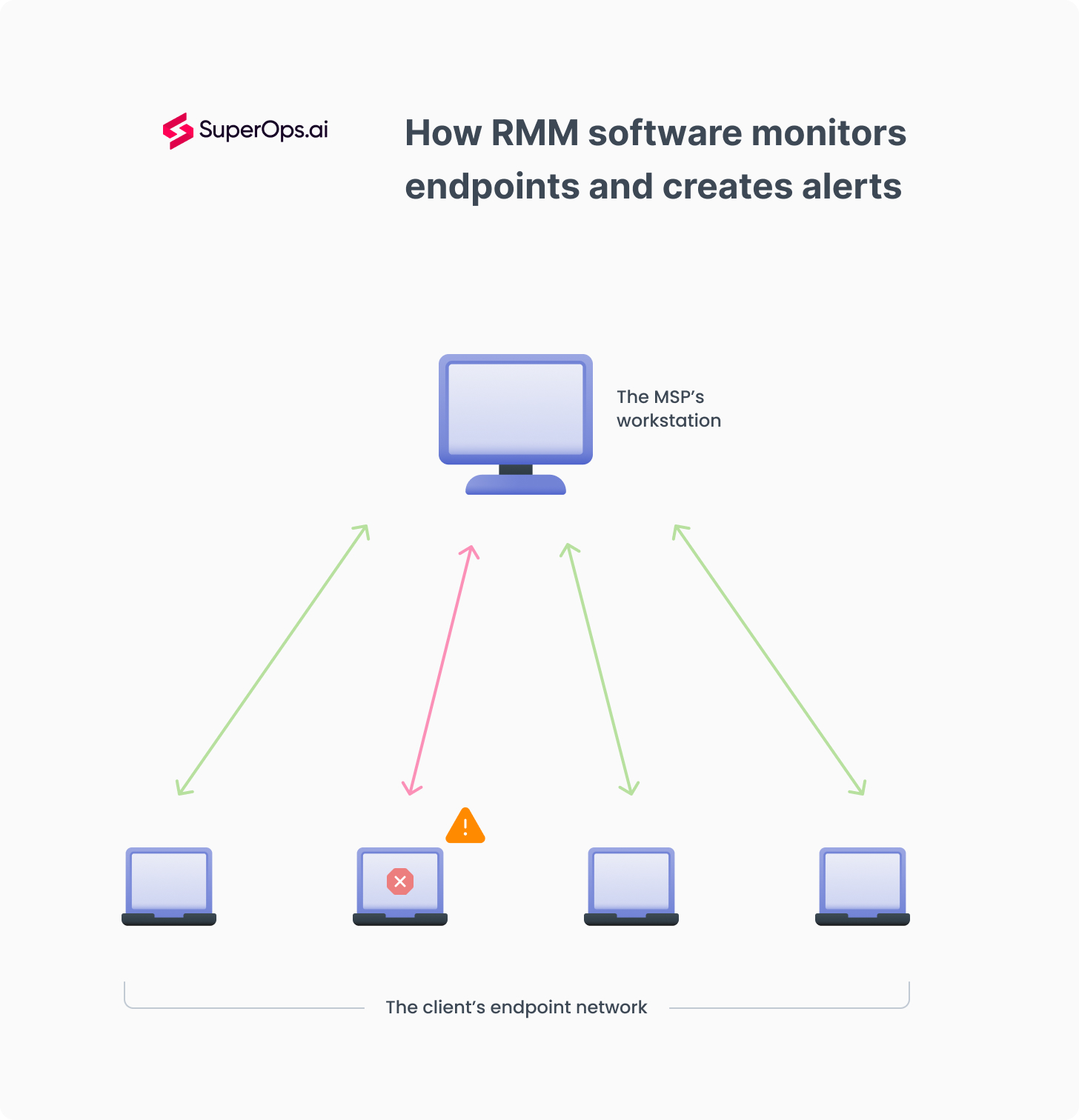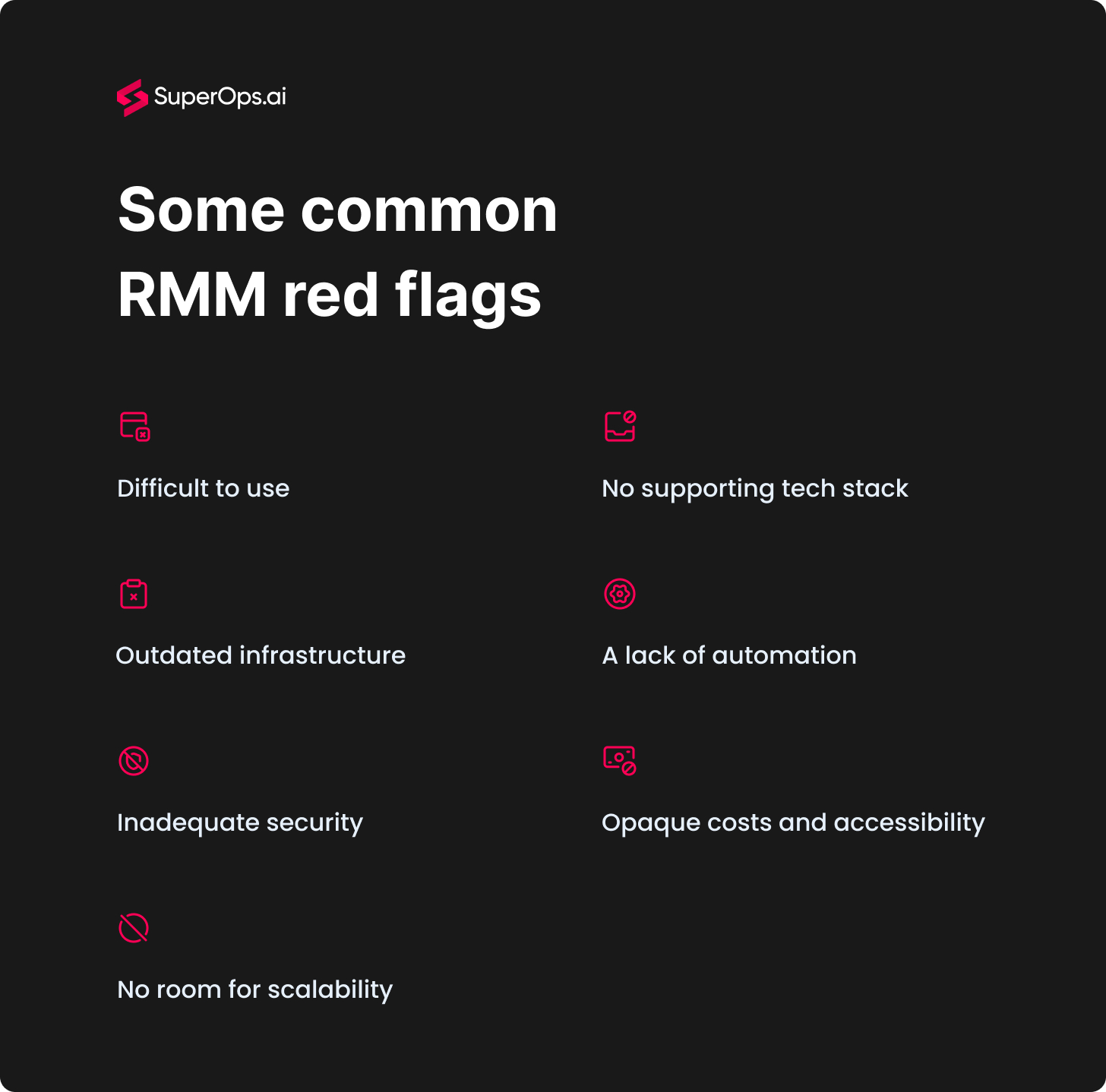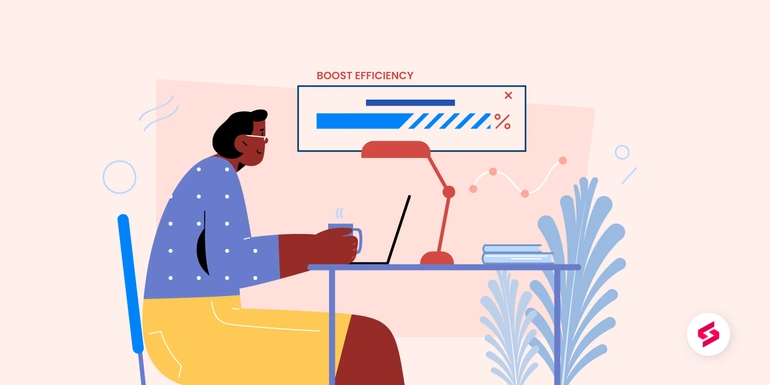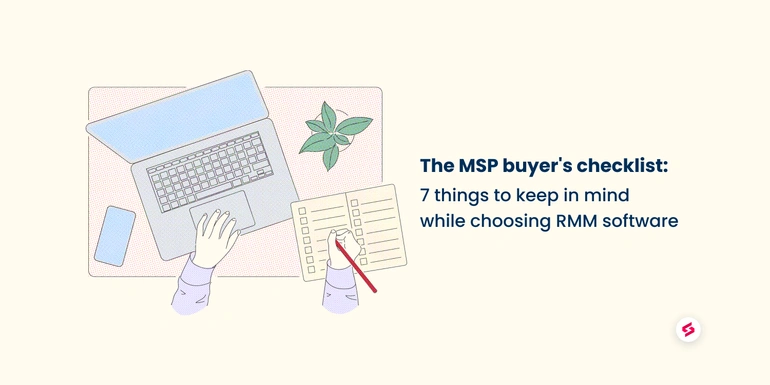A Guide to Great RMM Software
The life of an MSP is...complicated. On one hand, MSPs are out there, providing incredible value to businesses all around the globe through their services. Setting up large-scale IT infrastructure, provisioning endpoints for client networks, managing them remotely, protecting them from online threats - the list goes on. It’s safe to say that the MSP becomes the IT backbone that empowers their clients, and positively impacts their profit bottomline. It’s a no-brainer deal for businesses looking to grow rapidly without having to worry about scaling their internal IT teams.
On the other hand, a lot of MSPs, whose work revolves around tech, execute their everyday operations manually. Travelling to a client site, troubleshooting faulty endpoints, and repeating the whole process every single client can become tiring, inefficient, and expensive. With the onset of the pandemic, remote work further complicates this method of operations. Technology holds the answer to these problems that MSPs face in the form of RMM software. RMM streamlines your operations by helping you manage and fix endpoints remotely, without ever leaving your office. RMM is a great value proposition for MSPs who want to grow and maximize their ROI.
Knowing you need RMM software is half the battle won! The other half is covering your bases on the basics of RMM software, and things to know while you’re on the lookout for great RMM software for your MSP. We wrote this guide to help you out with just that!
What is RMM software?
Remote monitoring management (RMM) software is a platform that’s built to help Managed Service Providers (MSPs) and IT administrators remotely monitor and manage endpoints in the client’s network. Using RMM software, service providers can proactively spot and fix issues in client endpoints, and keep the network secure and running smoothly.
How does RMM work?
An RMM platform typically monitors a network of different endpoints using an RMM agent. The RMM agent is a small application that’s deployed in the endpoints that need to be managed, that constantly transmits information from the endpoints to the admin console. With this information, the technician has real-time insights into the health and the performance of the client’s network. This empowers technicians to spot issues, fix them remotely, and keep endpoints running smoothly, right from their workstation.
When an asset starts encountering issues, the agent quickly spots the issue, transmits it back to the technician, and notifies them in the form of an alert. With the alert’s context, the technician is immediately able to understand the severity of the issue and get to work on a fix.

The benefits of using great RMM software
Once you have a good RMM software solution for your business, the benefits it brings to the table are as clear as day. It streamlines a lot of your efforts, keeps important information in one place, and reduces grunt work to help technicians focus on resolving issues quickly and efficiently.
If you’re still on the wall about whether you need the tool or not, read below for the benefits of RMM software for your MSP:
Better client network health
With RMM-powered real-time alerts, technicians are now aware of issues in the client’s endpoints as soon as the issue occurs, not when the client faces the issue and raises a ticket for it. Now, technicians can work on issues proactively, and fix them even before the client notices something went wrong. This keeps the downtime low, and overall health and functioning of the client network at an all-time high.
Remote device support
You don’t have to restrict your services to the regions your MSP has an office in. RMM software enables MSPs to support clients with a distributed workforce across the globe. With an RMM agent monitoring the endpoint at all times, and remote access tools to remotely troubleshoot issues, you can help clients wherever they are without breaking a sweat.
Better security
MSPs know just how important it is to keep your client’s network secure. RMM software makes security management easier by automating security patch deployment for each set of devices within the network. MSPs can also remotely deploy antivirus solutions to readily eliminate suspicious elements.
Better ROI
Over time, the RMM solution becomes an amazing investment, saving you time and resources across the board. Automation saves a huge chunk of labor on redundant tasks, remote device support saves time and money spent travelling to client offices, and more. When you pair these benefits with an affordable RMM tool, you have a recipe for profitability.
Related reading: Best RMM software - A list of the top 11
RMM software red flags to avoid
There are a lot of vendors, and even more options to choose from, when it comes to RMM software. It is all too easy for MSPs to get confused on what RMM tool is the perfect solution for their business.
Oftentimes, solo MSPs and smaller shops get RMM software that’s meant for enterprise businesses, and are stuck with features that they don’t need. It’s completely fair to think, “But what’s wrong with having a few extra features? Maybe they’ll come in handy when I want to scale.”
But, here’s the thing: bloated RMM software may be packed with features, but it is not intuitive. It may be a heap of asset and network management features, but it comes with its disadvantages: the interface is outdated, basic actions take too many clicks, and its infrastructure is old. On top of all this, the costs of using these tools make them a poor value proposition for MSPs.
If you’re evaluating RMM software for your business, here are some common red flags and pitfalls to keep in mind.

Difficult to use
Technicians spend almost all their work day using RMM software to help their clients. A tool you use so extensively has to be easy to use. Too many clicks or too many windows to perform simple actions creates fatigue, which quickly builds up over time, leading to frustration and reduced productivity.
Outdated infrastructure
If your RMM software is a legacy on-premise solution, or uses hybrid architecture, then it’s not a good fit for the long run. Installation and implementation is time-consuming and expensive, there are more vulnerabilities, and there’s no room to scale. Go for a solution that’s built for the cloud.
Inadequate security
To keep your client’s network secure, you need to start with having a secure RMM solution. Does it have security features to set a high standard of protection? If it doesn’t, then it’s not worth using the tool and risking your and your client’s security.
No room for scalability
RMM software is an investment, which adds dividends in the long run. If you’re looking to constantly grow and scale, your RMM software needs to scale with you. If you don’t see it supporting your scale of operations in the future, then you’re better off with a solution that can.
No supporting tech stack
You need an ecosystem of tools to help you manage your client’s endpoints end-to-end. That includes tools ranging from antivirus management to data backup and recovery. You’ll need RMM solutions that have a growing set of software integrations to make your life as an MSP easier.
A lack of automation
If your RMM software doesn’t have automation to help you automatically deploy patches, or scripts to fix issues, that’s a no-go. Automation is an absolute essential to support the distributed workforces of today.
Opaque costs and accessibility
If your vendor makes it difficult to try the tool without commitment, or makes the total costs of using the software unclear, stay away. Opt for tools with transparent pricing plans, and an easily accessible free trial to check things out for yourself.
SuperOps.ai has modern, highly intuitive RMM software that streamlines IT operations and simplifies endpoint management. With SuperOps.ai, you have a unified set of features, a growing ecosystem of tools to maximize productivity and keep your endpoints running smoothly, and improve your MSP’s profitability while keeping costs down.
Here are some compelling reasons to try SuperOps.ai for your business:
- Asset management
- Granular endpoint monitoring
- Automated patch management
- Software deployment
- Script management
- Intelligent alerting
- Unified IT documentation
- Integrated PSA
You can always take a look at the product and see for yourself. We offer a 21-day free trial, no commitment, no strings attached. For a limited time, you can get a flat 50% discount on your subscription across all our pricing plans too!
We hope this guide was useful in helping you find the right RMM software for your MSP. If you think there’s anything we can add here, or if you have feedback for us, let us know—we’re all ears!
Frequently asked questions
We have them answered.
Why not try SuperOps.ai?
A modern RMM solution with industry-first intelligent alerting


